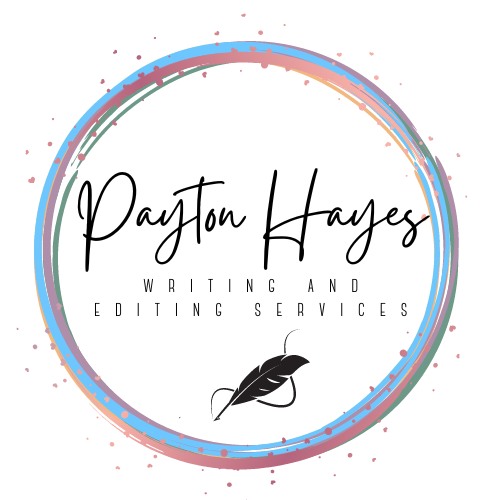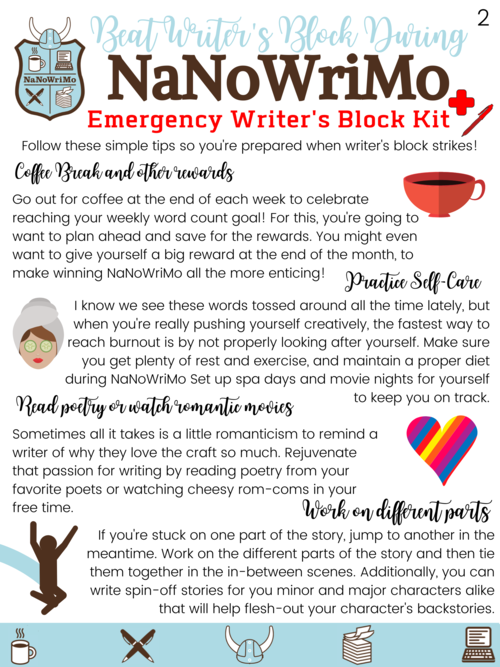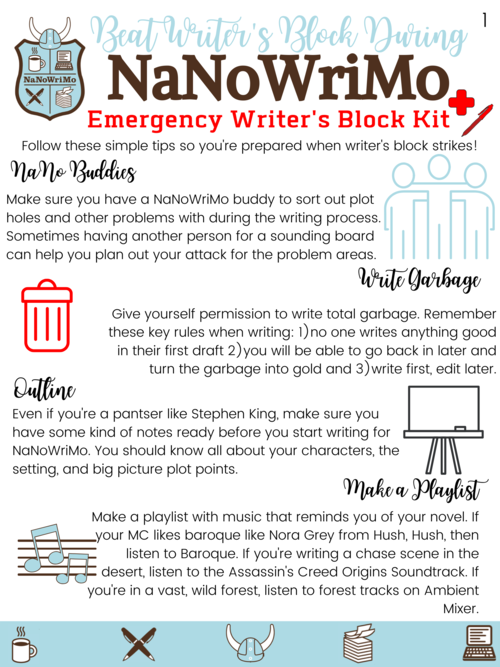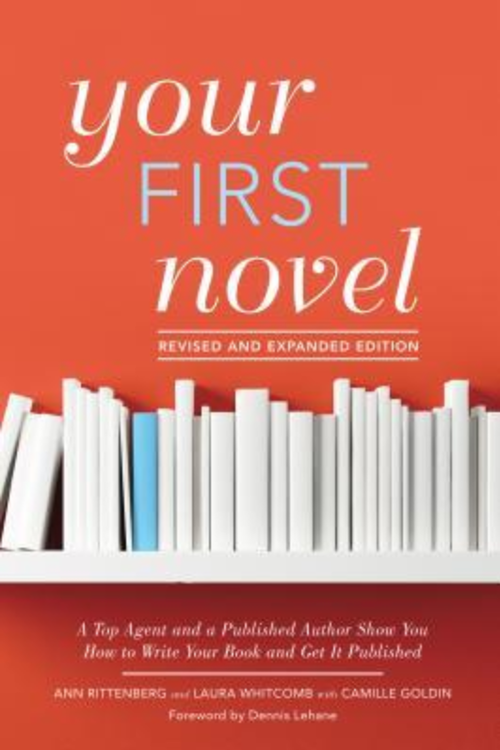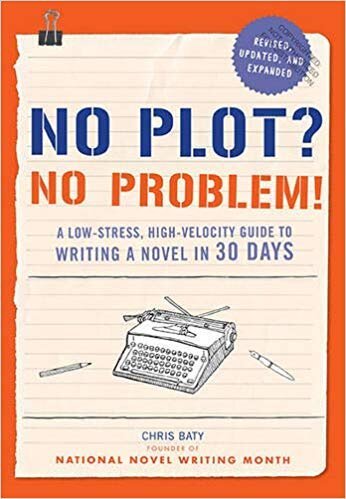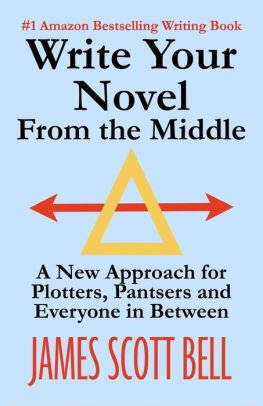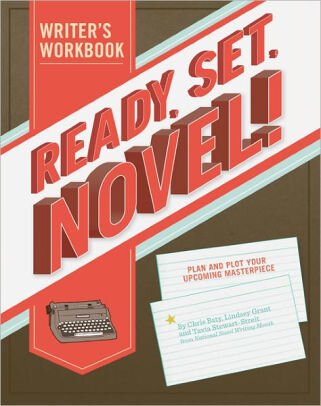Story Binder Printables e-Book (with 450+ pages of writing exercises, actionable advice, 100+ publishing resources, and now it’s FREE!) Scroll for access!
Finish Writing Your Novel And GET PUBLISHED by Using These FREE Story Binder Printables!
Are you ready to finally finish your novel and get it published? Subscribe to my newsletter and get instant access to the Story Binder Printables e-Book—450+ pages of printable worksheets, writing exercises, and story guides designed to help you build strong characters, craft compelling plots, stay on track with your goals, keep your novel notes organized, and push you to actually finish writing your novel. There’s also 100+ writing, editing, publishing, and marketing resources and an exclusive, subscriber-only, lifetime discount on all of the editing services I offer! You’ll also get lifetime access to my upcoming Online Resources Library, packed with all the aforementioned resources and more—just for my loyal newsletter subscribers!
Don’t miss out on this FREE gift! Sign up now and get your copy delivered straight to your inbox!
This post was written by a human.
Hi readers and writerly friends!
If you’re a returning reader, welcome back, and if you’re new to the blog, thanks for stopping by! I am so unbelievably excited to announce that I’m bringing the beloved Story Binder Printables Packet back, and it’s better than ever! After almost ten years, this much-needed, long-awaited redesign is finally here! Simultaneously updated and upgraded, the Story Binder Printables e-Book is the best version of itself yet. Keep reading for all the deets—(and the download link! 😉)
One of the biggest hurdles many writers (myself included) face, regardless of experience or skill level, is staying organized. Between character profiles, research notes, plot threads, and entire collections of inspo pics, it’s easy to end up lost in a chaotic mess of documents, digital files, and notebooks. I’ve been writing stories since I could hold a crayon and it’s pretty safe to say that I’ve tried it all—folders, notebooks, cloud-based word processing software, and even digital writing & notetaking apps. A controversial, yet brave opinion—keeping everything novel-related neat and accessible can feel just as overwhelming as dragging myself to my desk for my daily writing session. Is that just me? Doubt it. After years of trying (unsuccessfully) to force a hodge-podge of folders and notebooks and cloud storage systems to fit my unique writing process, I finally decided I’d had enough and created a customized solution to my creative conundrums.
For writers—or any other creative individual, for that matter—staying organized isn’t a luxury, it’s a necessity. An effective, reliable, and sustainable organizational system is essential for maintaining your creative momentum and actually finishing your novel.
It’s time to get organized, finish writing your novel, and get published.
If your notes are scattered all over the place, or stored across several different mediums and platforms, the Story Binder is about to change your life. Did I just call you disorganized in a blog post? Maybe. It depends. Does the shoe fit? If so, sorry, not sorry. Because once you see how much easier writing becomes with everything in one place, you’ll never go back. The Story Binder helps you collect, organize, and navigate every part of your story with ease, so you can spend less time searching and more time actually writing. The Story Binder just works. I’ll say it louder for the readers in the back.
THE STORY BINDER WORKS.
Seriously. It keeps everything exactly where it’s supposed to be, so you can quickly find your notes and get right back to writing in record time.
When I first released the original Story Binder Printables Packet back in 2016, it was a modest little PDF packet: just 52 pages, 10 color options, and priced at $10. It was one of the first printables I’d ever designed and I released it back in my freshman year of college! In 2019, I overhauled and completely rebranded my business and website, which entailed tasks such as operating under a new business name, switching to a new domain, updating logos and other assets, redesigning the website, adding a few fun and fresh colors to my color palette and brand kit, to name a few. Pair that with ten years of freelance editing and publishing industry experience, and suffice to say that an updated version of the Story Binder Printables Packet that reflected these changes was long overdue. Fast forward to 2025, and the new version has transformed into a full-blown e-Book with over 450 pages! On that note, you’ll see me referring to the old printables as a packet and the new printables as an e-Book. I think a PDF with that many pages can no longer be considered a packet, so an e-Book it is!
And the best part? It’s FREE.
The updated and upgraded 2025 edition still includes the 10 original colors, but now offers 25 additional color variants to choose from and more to come in the future! Each one comes in both black-text and white-text versions to suit your preferences and your screen or printer settings. Whether you’re a visual minimalist or someone who loves a bold aesthetic, there’s a version that’ll fit your workflow perfectly. Currently, all 35 colors follow the same formula and format, but I am already brainstorming what new colors, styles, and patterns to include in the next update. Continue reading to check them out and if you have any requests or suggestions for designs in the next edition, feel free to let me know by sending an email to me directly at hello@PaytonHayes.com!
What’s so great about the Story Binder Printables e-Book?
All of your notes are neatly contained in one place, making your daily writing practice more inspiring and encouraging and your writing process more mobile! Goodbye stuffy, old home office; hello fresh air and coffee shops!
Specific novel notes are organized by category and they’re easy-to-find without disrupting your writing process to dig through old folders stuffed with coffee-stained, hastily-scrawled, handwritten notes…never again.
Forget the boring digital Word Docs and the ruled loose leaf notebook paper. The Story Binder is functional for sure, but did I mention how fabulous it is? With 35 color variants to choose from (not counting the black and white text colorways), these printables will reignite your writing passion and fuel you with inspiration every time you open your Story Binder!
And best of all? 468 pages of actionable content that will keep you on track with your writing practice and will guide you to the finish line with your novel. Yes, I’ve spent all this time and webpage space ranting about how effective the Story Binder is at keeping your novel notes organized, but that’s just one reason why it’s so successful at helping writers finish and publish their books!
The Story Binder Printables e-Book is an organizational tool, writing workbook, and publishing roadmap crafted with intention, for creative writers who want to finally finish writing and actually publish their novels.
When I say there’s 468 pages of actionable content inside the Story Binder Printables e-Book, I’m not just throwing in a bunch of buzzwords and keywords for SEO. Every single page sparks inspiration and encourages you to take action. Not only that, but it’s adaptable, practical, sustainable, guided action, informed by over a decade’s-worth of freelance writing and editing experience from yours truly. I went to college for creative writing and editing for the publishing industry. I’ve read dozens of writing craft books, editing manuals, novel planning and plotting guidebooks, and more and I’ve worked with a plethora of clients from fiction to nonfiction and everything in between. While I’m proud of my experience and education, I’m not just saying all this so I can brag to strangers on the internet. My point is this: if you’re looking for a blank canvas, the Story Binder isn’t it. It’s so, so much more than just a template for you to fill in the blanks. Every page was thoughtfully and meticulously designed, with 10+ years of writing expertise in mind.
Likewise, the Story Binder isn’t just a novel reference notebook. It’s a flexible, customizable and adaptable novel outline system made specifically for YOUR story. Think of it as your very own book bible. It’s your personal roadmap for writing and publishing a novel, complete with all the tools you need to stay organized, inspired, and on track from first idea to final draft.
With this new system your writing process and daily writing practice will have fewer barriers to entry, less friction keeping you from getting started, fewer distractions and ultimately less interruptions that pull you out of your flow state. The Story Binder Printables e-Book will give you every tool you need in your toolkit to confidently complete your novel and get it published. The Story Binder will help you keep every detail of your novel in one place. No more digging through endless notes, cross-referencing various digital drafts, or worrying about losing crucial details to tech glitches. No more scrolling your search results for hours only to get stuck in a research loop of exploring the ins and outs publishing industry and being inundated with advertisements. No more halting your writing progress to search up a quick question about querying literary agents—that let’s face it: never ends up being quick. Just grab your binder, flip to the section you need, and get back to writing.



































So what’s inside the Story Binder Printables e-Book?
The new and improved Story Binder Printables e-Book is a writing workbook, publishing roadmap, and a treasure trove of resources packed with nearly 500 pages of worksheets, templates, and trackers created for use in any genre, demographic, or at any stage of your writing process.
Inside the e-Book, you’ll find:
A variety of Story Binder Covers in different styles, from bold to minimalist designs, to keep you motivated.
Instruction Guide Sheets for setting up your binder in a way that actually works for you.
Section Dividers (with and without headers), Section Tabs, and Page Number Tabs to help you organize your navigation your way.
Author Ownership Page to designate your book bible as uniquely yours.
Brainstorming Worksheets including a Mind-Map Sheet, Idea Keeper Sheet, and distinct sections for ordering and storing your Story Fragments and Deleted Scenes for later use.
Motivational Daily Writing Activities from Writing Warm-Up Prompts to Story Exploration Exercises to Writing Challenges and more, to keep your writing practice fresh and fun.
Plot Progression Worksheets (such as Chapter and Scene Lists, Scene Tracker Sheets, Scene Cards, Tension & Pacing Worksheets, Timeline Charts, and a Novel Storyboard Sheet)
Author Voice, Style, and Tone Worksheets specifically designed to help you maintain a consistent and cohesive narrative throughout the novel, while preserving your unique writing style, authorly voice, and your characters’ distinct personalities.
Summarization Worksheets, such as the general Novel Overview Sheet & Synopsis Sheets to help you see the forest for the trees in your story, from a bird’s-eye view, to the miniscule details at the ground level.
Creative Companion Activities including a Novel Inspo Exercise, a Mood Board Activity, and a Story Soundtrack Worksheet to help get your creativity flowing and recharge your creative battery.
Character Development Worksheets including Detailed Character Profiles, Voice and Dialogue Exercises, Character Arc Outlines, Relationship Maps, Name Lists and Pronunciation Guides, Mainstream and Speculative Fiction Character Questionnaires, Backstory Studies, Character Sheets and Moral Alignment Charts (inspired by Dungeons & Dragons) to get you into the hearts and heads of your characters.
Visual Writing Progress Trackers (including a 30-Day Word Count Tracker, Novel Progress Tracker, and a Writing Goals Exercise, to help you stay disciplined and keep you accountable to your daily writing practice.
Setting & World-Building Exercises—from Setting Questionnaires to Map-Making Activities, Magic Systems Worksheets, Speculative Fiction Glossaries, and more—to help you transport readers to the wondrous world(s) in which your story takes place!
Revision Roadmap that includes a step-by-step Editing Action Plan, a series of draft-by-draft Review Checklists, a strategic Self-Editing Checklist, and a variety Revision Reflection Prompts, giving you actionable editorial insight, progressively honing your writing skills, keeping you on course for completing your novel, and refining your story in each iteration!
Publishing Prep Sheets that include Beta Reader Questionnaires and Comments & Critiques Forms, as well as Publishing Plans and Checklists (for both traditional and independent publishing routes) to assist you in sharing your story with the world.
Reflective Journal Prompts at the end worksheets to encourage critical and constructive examination, introspection, and mindful contemplation of your experience at every stage in your writing process. Reflective journaling allows you to pause, assess, and realign as needed, helping you track progress with your project(s), notice improvement in your writing skills, and stay focused and motivated to reach your creative goals.
Plus LIFETIME ACCESS To:
All updates and future editions of the Story Binder Printables e-Book, including new color variations and designs.
The upcoming online Story Binder Printables e-Book Resources Library, an ever-growing collection of writing, editing, publishing, and marketing resources (including but not limited to books, articles, guides, tools, software, and apps.)
An Exclusive, Subscriber-Only Discount on any editing services I offer—just for my loyal newsletter subscribers! (Yes! This discount can be combined with other applicable discounts. See the Discounts section on my Homepage for more information!)
Once I started using the Story Binder method for my own novels, everything just clicked. My writing process became smoother, faster, and more consistent. Years of working with clients, and going through trial and error with my own writing, taught me what works and what doesn’t. I’ve packed over a decade’s worth of experience into this 468-page toolkit (per color variant!) to help you write better, faster, and more confidently.
Yep, you read that right—each color variant includes both a black-text and white-text option. That’s 934 pages per color, and with 35 colors to choose from, you’ve got 22,416 possible combinations for creating your perfect Story Binder. And since the Story Binder Printables e-Book is a digital download, you can print and reuse it infinitely, across all your novels, short stories, and other creative writing projects!
Over 250 Story Binder Cover Options!
〰️
Over 250 Story Binder Cover Options! 〰️



































Are you thinking this sounds too good to be true?
I get it. You’ve probably seen a dozen polished websites with flashy sales copy and overpriced “limited-time offers.” I can assure you, this situation is different. I’m not asking you to buy or do anything. Let me explain. 🤗
The Story Binder Printables Packet has been available on my site for almost a decade, and hundreds of writers have purchased and loved it. As I mentioned in the opening paragraph of this post, I created this system as a solution for my own writing struggles and it ended up being an invaluable resource for so many other writers over the years. The new and improved e-Book version is backed by real publishing experience and years of working with other writers.
Throughout the process of revising, editing, and redesigning the Story Binder Printables e-Book, I came to the realization that I don’t want paywall to be the obstacle that stands in the way of helping other writers share their stories with the world. As an entrepreneur, I still have to earn sufficient income to afford my lifestyle, keep my business going, and pay back my student loans, so naturally, reducing my rates isn’t an option for me—especially not in this economy!
That said, one simple way that I can give back to my beloved writing community is to make the Story Binder Printables e-Book accessible to all writers, no matter their writing experience or skill, notoriety, genre, audience demographics, or any other distinction. I believe removing the price tag will allow the Story Binder to inspire, encourage, and empower more writers than ever before.
As a professional book editor, I make a living from improving other writers’ work, but as a fellow writer, I make a life from helping others tell their stories. Therefore, both as a thank you for supporting my creative pursuits and freelance career, and because it is my mission to help people find connection, representation, and a sense of belonging through story—I’m offering the new and improved 2025 Story Binder Printables e-Book to you for free.
Well, almost free. 😅
Okay, so what’s the catch?
I’m not asking you to buy anything or do anything. I’m not asking you to spend a single cent of your hard-earned money or more than a minute of your time, if that.
All I’m asking for is your email address. That’s it. No payment, no commitment, no sharing required. (Though if you do share this with your own creative community, you might just become my new favorite person.😉)
I understand the hesitation you might be feeling. I used to get so many marketing emails I could barely keep up with my own personal email inbox (let alone my business inbox, so I know exactly how annoying email newsletters can be, if done the wrong way.) I’m not here to spam you. I’m here to connect with fellow creatives and build a community around writing, editing, publishing, and everything in between. That’s why I promise to treat your inbox with respect. I consider the space you make for me in your inbox and the time you set aside in your week to read my emails sacred and this is a unique opportunity for a creative, specific, productive, and ongoing conversation centered on topics such as writing, editing, freelancing, books, art, and all things to do with the publishing industry, to name a few.
So what happens when you join the email list?
Your personal information is safe. I will never share, sell, or misuse your data.
You’ll receive one thoughtful email per week, max. Topics range from writing advice and freelance editing tips to bookworm life and publishing industry insights.
You’ll be notified of any recent articles posted to my blog and given a link that’ll take you straight to the post. I believe that your time is just as valuable as mine, so I’ll never just copy and paste a blog post in an email and hit send. That would be suuuuper lame. But if you’d like a condensed version with your new post notifications, be sure that the box in the form below is checked to join the “Bite-Sized Blog Posts, Please!” newsletter segment. If you’d rather skip the blog post bullet points, make sure the box is unchecked. You can change this at any time by sending me a quick email requesting a change to your email newsletter preferences.
You can easily unsubscribe at any time. No guilt, and no hard feelings. 😎
You’ll never receive anything offensive, discriminatory, or otherwise unprofessional in my newsletter emails. Likewise, I will never spam you. I care deeply about the kind of content I send out into the world and the volumes that content speaks about me both as an editor and as a person.
You can reply to any newsletter if you want to chat, ask questions, or give feedback—I love hearing from other creative peeps like you!
If the Story Binder sounds like something that could help you in your writing journey, I’d love for you to download it, use it, and make it your own. Even if you unsubscribe after downloading, that’s okay. My goal is to get this resource into the hands of as many writers as possible. But if you decide to stick around, I’d be honored to have you along for the ride. So what are you waiting for?
Drop your name and email into the sign-up form below and you’ll be directed to the Story Binder Printables e-Book download page immediately after!
If you made it to the end of this blog post, thanks for reading! And if you signed up for the newsletter using the form above, then you should have been redirected right to the webpage where you can download your all-new, super fabulous Story Binder Printables e-Book! If you’re still reading this, then the download link is on it’s way to your email inbox as we speak! I’m so excited to have you here and I can’t wait to see your novel on bookstore shelves very soon!
Recent Blog Posts
*This blog post was written by a human author without the assistance of generative artificial intelligence (gen-AI). The presence of en/em dashes, specific verbiage, or predictable, marketing-style phrases are not sufficient indicators of gen-AI usage. Readers should use to context clues and critical thinking skills in tandem with pattern recognition when determining the validity of human authorship of media in the modern digital era. If you want to learn more about my stance on gen-AI and it’s role in media and the publishing industry, I plan to release a post sometime in the coming year, so stay tuned for that.
Written by Payton Hayes | Last Updated: June 23, 2025NaNoWriMo: 25 Killer Tips To Help You Write Your Book In One Month! + Free & Undated Story Binder Printables
Hi readers and writerly friends!
We didn’t just come here to win NaNoWriMo—no, we came to slay it. Okay, maybe that line is for the horror writers, but I’m serious when I say I am slaying NaNo this year. 2022 is not only a new year, but it’s a new beginning. In 2022, we start and finish our novels, we reach our goals, and we don’t stop for anyone!
I’ve prepared this guide months in advance so you can get prepared too! You should be prepping all of October—er, prep-tober for the biggest, baddest, bestest NaNoWriMo ever! And okay, maybe some of those aren’t real words, but we can pretend, and we can still get psyched! Hooray for reaching our goals and stuff!
This blog post covers everything from background information on NaNoWriMo, to how to prepare for the writing challenge, to emergency solutions for that nasty writer’s block, to FREE printables and more!
I discovered this concept from Shayla Raquel from Shaylaraquel.com I took inspiration from her guide which you can check out here!
The NaNoWriMo Crest. Image by NaNoWriMo.
What is NaNoWriMo?
In my opinion, there’s only two valid reasons for asking this question: 1) you’re a writer and you’ve been living under a rock or 2) you’re a non-writer. Either way, I am here to serve and inform. *Bows graciously* NaNoWriMo is an acronym that stands for National Novel Writing Month. It begins every year on November 1. Participants have 30 days to write a 50,000-word novel. It comes out to 1,667 words a day.
How do I participate?
To get started, simply head to NaNoWriMo.org, click the Sign Up button, and fill out your profile. Once you’ve set up your profile, you can announce your novel, add buddies, and start prepping your book.
Is it free?
It’s free. In fact, NaNoWriMo is a nonprofit. However, if you’d like to support them, you can always donate to their organization.
Are there any local events for NaNoWriMo?
Although people all over the world participate in NaNoWriMo, you can go to their Regions page, find your specific region, and see if there are any Come Write-Ins available.
NaNoWriMo’s Come Write In program connects libraries, bookstores, and other neighborhood spaces with their local NaNoWriMo participants to build vibrant writing communities.
For example, the Yukon Writers’ Society in Oklahoma has four official Come Write-Ins. NaNoWriMo sends out official swag and signs so people know where to go.
How do I win NaNoWriMo?
You must reach your goal of 50,000 words by November 30. To receive your official certificate and get the winner badge on your profile, you must update your word count daily and make sure the word count reaches 50,000 words by November 30, 2020. Here’s their how-to guide.
Download Free Novel Binder Printables
Got a binder handy? Fill it with these beautiful printables and add the necessary information.
Here's what you'll get when you download the free PDF:
Binder title page with name plate
At a Glance — overview of your novel
Character List
The Protagonist — three pages for character details
The Antagonist — three pages for character details
To-Do List—you can fill the list with my NaNoWriMo To-Do List (scroll down!) or make your own!
Story Outline — three pages detailing the parts of a novel as per the three-act story structure
Word Count Tracker—with NaNoWriMo daily word count goal and space for your daily word count reached
I suggest tossing these fantastic freebies into a lovely, matching blue binder! Scroll down to download!
NaNoWriMo To-Do List:
1. Grab some coffee—this is going to be so fun!
2. Set up your NaNoWriMo account
3. Fill out your author bio and add a profile photo.
4. Announce your novel.
5. Add your buddies. (Add me too!)
6. Find your region and see if there are any local Come Write-Ins.
7. Print my free novel binder templates and prepare your binder. (Scroll back up!)
8. Tell your social media friends about NaNoWriMo. Tag NaNoWriMo and use hashtags.
9. Tidy up your writing space and add some inspirational NaNo swag. Or make your own! You can also add a candle, some motivational quotes and pep talk books! (Scroll down!)
10. Put together a NaNo board. This is the fun part! Grab a corkboard or dry erase board and display your outline, character photos, book cover sketches, inspirational quotes—anything that has to do with your book. If you prefer digital vision boards, start a Pinterest board.
11. Download my emergency writer’s block kit for when the dreaded writer’s block inevitably strikes! Don’t let lack of motivation or inspiration slow you down or keep you from reaching your NaNoWriMo goals! (Scroll down!)
12. Create a reward sheet. When you hit 10,000 words, you should get a reward—like a weekly coffee stop for reaching your goals each week or bigger rewards for bigger milestones such as every ten thousand words! Write a list of rewards that go with each big milestone you hit. If all of this motivation fails you, your rewards will keep you on track, believe me.
13. Print the Word Count Calendar (scroll down!) and pin it to your NaNo board!
14. Add official Come Write-Ins to your schedule if you found any (#5).
15. Looks like your cup is empty…coffee break?
16. Create a NaNo playlist. Don’t forget game soundtracks and Ambient Mixer!
17. Set a certain time to write then tell your family/friends/neighbors/pets you are writing for X amount of minutes/hours each day. Be proactive in stopping distractions. Consider postponing plans with friends and family until you’ve met your goal each day.
18. Draw pictures of your characters or Google pictures of what you think they’d look like. I like to have a few photos for every character, including headshots, full-body shots, and photos that accentuate their style. You can add them to your NaNo board!
19. Look at book covers. Obviously don’t steal someone else’s book cover but find a few that you think would represent your book well. Keep them to refer to when NaNo hits. Add to your NaNo board!
20. You think we’re busy now, but wait ‘til we’re really in the trenches. Speaking of being busy, I think it’s time for more coffee—gotta keep the productivity levels up, right?
21. Prepare the manuscript. This is actually really fun and can make you feel like a bona fide novelist. Write your title, table of contents (if you have one), acknowledgments, prologue, and so on. Get the novel looking fancy!
22. Find your accountability buddy now. Get together with them and discuss both of your books! When NaNoWriMo is in full swing and you’re feeling stuck, you can hit up your NaNo buddy for instant support—or a kick in the pants, whichever.
23. At the end of NaNoWriMo grab a celebratory coffee—for winning or for simply participating!
24. Consider donating to NaNoWriMo.
25. If you finish your novel, then great! It’s now time to edit. If you still have some writing to do, stay on the writing train with 1,666 words a day until it’s finished. By participating in NaNoWriMo, you’re building the habit of writing every day and it’s much easier to maintain the habit than to pick it back up if you let it go. Keep writing and you’ll reach the ending before you know it!
Keeping Up With Word Counts
Download my free NaNoWriMo word count calendar so you can keep track of your writing goals and work count all month long!
Cackling Over Calendars
Don’t like my calendar? That’s okay! Try this one on for size! Humor helps pass the time! @hermiejr157 on DeviantArt designed this hilarious, quirky, and painfully true calendar that accurately describes NaNoWriMo for most writers!
“NaNoWriMo Desktop.” by @hermiejr157.
Worried About Writer’s Block?
Download my free NaNoWriMo writer’s block emergency kit!
NaNoWriMo Articles For Extra Inspiration & Motivation
Books To Read In Preparation Of NaNoWriMo!
The books shown above are:
Ready, Set, Novel!: A Workbook by Lindsey Grant and Chris Baty
You can find all of these and more on my Payton’s Picks Page
Build Or Join A Writing Community To Keep Each Other Accountable Throughout NaNoWriMo!
Social Media
Facebook Groups
Use NaNo Hashtags To Find NaNoWriMo-Related Content
Most social media out there allows you to post hashtags, and often up to at least 30 per post! You can comment even more hashtags on the post to increase visibility! Here are 50 different NaNoWriMo hashtags for you to use with your content!
#1667wordsaday
#amediting
#amwriting
#authorlife
#book
#bookish
#bookishthings
#booklove
#booklover
#booklovers
#bookstagram
#bookwormforlife
#bookworms
#characters
#creativewriting
#fantasy
#fiction
#fictionbooks
#iamawriter
#igbooks
#ilovewriting
#inktober
#inspiration
#instawrimo
#nanoprep
#nanowrimo
#nonfiction
#poetry
#preptober
#procrastination
#scrivener
#stylewriting
#wip
#write
#writer
#writerscommunity
#writerscorner
#writerslife
#writersofig
#writersofinsta
#writersofinstagram
#writing
#writingchallenge
#writingcommunity
#writingeveryday
#writinglife
#writingofig
#writingprompt
#yabooks
#yacontemporary
#yalit
Bibliography
hermiejr157. “NaNoWriMo Desktop” Deviantart post, November 4, 2008.
NaNoWriMo. “NaNo Prep 101.” NaNoWriMo website, accessed October 18, 2022.
NaNoWriMo. "NaNoWriMo Logo.” Image. Accessed October 18, 2022.
Raquel, Shayla. “100 Plot Ideas. “ Shaylaraquel.com blog post, October 16, 2022.
Reedsy. “What is NaNoWriMo? And How to Win in 2022.” Reedsy blog post, October 5, 2020.
Steve. “Getting Ready for NaNoWriMo.” Storyist blog post, accessed October 18, 2022.
Recent Blog Posts
Written by Payton Hayes | Last Updated: March 14, 2025How To Write Effective & Believable Love Triangles
Hi writerly friends!
This week, in Freelancing, we’re talking about the dreaded love triangle. I know, I know, some of you are moaning and groaning about this, but what if I could tell you there is away to write the love triangle trope in such a way that won’t get you crucified by your readers? What if I told you not all love triangles are bad?
Okay, now you’re rolling your eyes.
But hear me out—the reason bad love triangles are bad is because they’re shallow and have no substance. The characters have no real connection with each other, the reader feels no real connection to the characters, and ever move they make is founded in shallow, superficial misbelief. With these kind of love triangles (most love triangles, if I’m being honest) is that everything is so painfully surface level.
Not only do the characters have no real connection to themselves or the reader, but they lack connection to their internal conflict as well. Everything is stagnant and predictable, and chances are, you’ve got it all figured out by page two. Who wants to read a book where they’ve got the love triangle figured out by page two? I certainly don’t, and I’m sure neither you nor your readers want to do so either. So, is there a way to actually make this plot device interesting? Is there a way to revolutionize the love triangle and breath fresh life into it? Yes. That’s why I’m going to show you the secret to a good love triangle (yes, it does exist). It all begins with know what NOT to do.
Don’t make your love triangle simple
Three friends enjoying an afternoon drink together. Photo by Helena Lopes.
Of course, usually, I would advise the KISS method (Keep It Simple, Sweetie) but this time I’m advising against it. The reason so many love triangles fall flat is because they’re too simple and predictable and the reader can figure it out by the end of the first page. This is old and well overplayed since most of the time we already know who the main character will end up with anyways. The reason it’s a love triangle and not a love line is because it’s supposed to be confusing, complicated, and challenging to the main character (remember the three C’s and you’ll be fine). And perhaps we should do away with love triangles altogether —a love web would probably be the better descriptor for what we’re shooting for, since a web is less linear and therefore lest predictable. Weave together plots and characters’ unique storylines, use suspense, character, pacing, rising and falling tension, and amp up the drama in your love story.
Allow the triangle to bring out the internal conflict
This pretty much applies to any genre or method of storytelling, but if something doesn’t challenge your characters, force them to fight for their desires, confront their fears and upend their entire life as they know it, then the reader will lose interest. Now, I don’t mean they have to go on some crazy big adventure, but whatever internal and external conflicts they are dealing with need to be meaningful, they need to matter, and they need to be able to shape your characters in a non-superficial way. Put your characters out of their comfort zone instead of simple asking “which one will she chose,” especially if by the end of page one, we already know which one she will choose.
Not only is this overdone and sooo predictable, but it’s devoid of the electricity that lights up a story—the internal conflict—when the protagonist is forced to confront their greatest fear, crush their misbelief about the world, and ultimately achieve their greatest desire all while developing as a character and delivering a powerful message to the reader. When it comes to story writing, everything happens for a reason, and therefore, the reader needs to know why something matters to the characters. If the reader doesn’t see why it matters to the characters, then they won’t see why it should matter to them.
I’m going to let you in on a little secret here: you can use any literary device in your story, no matter how cliché or overdone it is, so long as it directly engages with the main characters inner conflicts, brings them to a fear versus desire decision and forces them to reckon with despair before reaching their aha moment that will bring their character development full circle. That’s right, any device. You’re welcome.
If the external conflicts are continuously forcing your character closer to their internal conflict, then you’re doing it right. Additionally, if the other characters are doing the same thing—being forced to confront their internal conflict—then using a love triangle would make so much more sense not only are the external forces at play here, but everyone’s messy emotions and tangled inner conflicts should be at play as well. Consider how your love triangle can cause all of your characters to either confront their fears or run from them?
Make the love triangle a catch 22 for the protagonist
For the most part love triangles should really only be used to force your characters to make a decision they otherwise would shy away from and force your readers to feel for the characters in said sticky situation. Anyone who reads and enjoys the trope will tell you they aren’t reading it because it’s realistic—in fact I’ve venture to guess most of us never have and never will find ourselves in such a predicament but it’s the ability to put ourselves in another’s shoes and feel for them and the tough decisions they have to make that makes the love triangle work.
However, their decision really has to mean something to the character. It needs to be an ultimatum for them, and it needs to really holds weight for it to resonate with your readers. It cannot simply be “which person will I chose”.
no.
No.
NO.
Three college students standing on campus. Photo by Alexis Brown.
The stakes just aren’t high enough and pressure for the reader to stay invested isn’t painful enough in this case. It goes way deeper than that—it goes all the way to your protagonist’s deepest fear and greatest desire.
Ask yourself these questions before using the love triangle
There are a few questions to ask yourself before writing the love triangle. It might take you a while to come up with the answers for these but trust me, it will make writing convincing, compelling, and challenging situations for your character much easier and you will better understand how the love triangle is directly linked to the characters internal conflicts. Additionally, your readers will be so engrossed in your story, they won’t even notice that you’ve just revolutionized one of the most hated tropes of all time.
Here are the questions:
What is my protagonist’s inner conflict and how did it lead them into this love triangle?
If they’re being honest with themselves, the real reason they’re stuck in this love triangle is because_________?
How does this love triangle cause all three characters to face their fears?
What would it take for the protagonist to overcome their fear and make the right choice?
How high are the stakes and how hot is the fire beneath the protagonist’s feet to make a decision?
Answer those questions and you’ll know how to link the internal conflict and the love triangle in a meaningful way. Trust me when I say, as long are you’re drawing on the internal conflict, you can’t go wrong and the reader certainly will be invested. It’s all in the way you play with the protagonist’s greatest desire and deepest fears.
And that’s it for my guide on how to do love triangles the right way. I know, unpopular opinion, but I think they can be done, and well, I might add. I think the reason we’ve seen so many badly written love triangles, is because it’s a plot device (something used to drive the plot) and instead writers are using it as a surface-level element. Over the years, we’ve forgotten how to really use this device effectively and that’s why it had gotten to exhausting and boring to read over and over again.
Anyways, that’s it for this week’s post in Freelancing. I hope you enjoyed reading this and if the guide helped you better your love triangle game, let me know in the comments below! Don’t forget to like and sign up for my email newsletter to get awesome, actionable writing advice straight to your inbox each month! As always writerly friends, thanks for reading!
Further reading:
—Payton
How To Write Best Friends to Lovers Romance That Feels Realistic
Hi writerly friends!
I’m back this week with another romance writing guide. Next week we’ll be discussing how to write believable hate-to-love romance, so I thought it’d be a great warm-up to show you guys how to writer believe best-friend-to-lovers romance. This is obviously a steppingstone and acts as the middle ground between enemies and more-than-friends in hate-to-love romance, so as you might expect, you can’t have one without the other.
However, your characters don’t always have to start out hating each other, they can indeed go from friends to lovers in a single story. Funnily for us, and embarrassingly for your characters and readers, it’s not exactly a straight shot, no—it’s a pretty rocky ride from best friends to lovers and it can be a tricky-to-write trope.
It’s unsurprising that the characters will have a bumpy time getting from one side to the other, as one is decidedly platonic and the other is decidedly romantic, and the transition from friends to lovers can be tough to read, even tougher to write, and often employs tons of awkward exchanges and cringe-worthy moments.
So, how do you write best-friends-to-lovers romance that is realistic and believable to the reader?
Step 1: Embrace The Weirdness
As you might expect, writing best-friends-to-lovers romance stories is going to feel weird, because plot twist, going from best-friends to lovers is weird! Not unearthing any best kept secrets, her—everyone knows it’s a weird shift, especially if you’ve known each other since childhood. So, when writing this trope, don’t shy away from all the weirdness, awkwardness, and embarrassing, gross feelings that happen, because it’s completely natural and these feelings should be present in the story. In fact, the reader should be able to pick up on these feeling and feel weird about it too. Secondhand embarrassment is a thing, and it’s something we want our readers turning pages to get to a point in the story when everything makes sense again and the awkwardness has died down a bit.
However, don’t go so far as to make it unrealistic. Yes, at times the uncomfortableness of the transition should be almost palpable to the reader, but keep the balance between rising and falling tension so that readers stay on the edges of their seats and grit the teeth at all the right moments.
Step 2: Determine Whether the Love is Mutual or Unrequited?
Before we get into the story structure for this trope, ask yourself whether the love between your characters or if it’s unrequited. This is very important to how the story will play out and what choices your characters will make based on their emotions, especially towards the resolution. Both routes can be delicious and heart-wrenching in their own right but know which one you’re going to go with in your own writing, will make the process a lot easier.
Jonah Hauer-King as Laurie Lawerence and Maya Hawke as Jo March in Little Women (2017) Photo by PBS.
To make it easier to chose which path your story will take, I’m going to give you a couple of examples, the first being Little Women by Louisa May Alcott, and the second being Emma by Jane Austen, (and no, I didn’t just pick these two because they involve someone being gifted a piano, but man isn’t that romantic?)
In Little Women, Laurie’s love goes unreturned when Jo tells him she never saw him as more than a friend. This sends him to Europe to avoid his heart break. When he returns after falling for Jo’s sister, being rejected again, and being inspired to do something with his life, he asks Jo to marry him. She rejects him again and ends up marrying someone else, but this story is a prime example of a best-friends-to-lovers romance that took a turn when the love was unrequited.
On the flip side, Emma, by Jane Austen Emma is startled to realize after everything, she is the one who wants to marry Mr. Knightly. When she admits her foolishness for meddling in the romances of others, he proposes, and she accepts. This is a great example of friends who become lovers where the love is returned.
Step 3: Follow The Structure
Alright, now that we got that out of the way, let’s talk about the parts of the BFTL story structure (at least that’s the acronym I’m giving it because that’s just way to much to type every time, sorry, not sorry.)
Whether or not you go by the 3-Act Story Structure, every best-friends-to-lovers romance typically follows this basic format:
Foundation
Set-up
Aha moment
Conflict
Decision
Resolution
Foundation
The first part of the structure for this trope is the foundation, where we are introduced to all core story elements, characters, setting, premise and theme. Here, the reader will get to know what exactly the story they’re reading is.
Set-up
The second part of the structure is the set-up. This is where the meet cute would occur in romance, and for best-friends-turned-lovers romance, it is no different. Introduce the characters, their relationship at this point in the story, and begin laying the groundwork for the transition from best-friends to future lovers.
Click here to read my blog post for creating the perfect meet cute.
While your story might be set preceding or following the formation of your characters friendship, it is important to know how and when they became friends, because if they become lovers later on, this will be an important part in the evolution of their relationship.
Aha Moment
This part of the story is when the characters first realize they are in love with each other. If you chose to go with the unrequited love path, then here, they would learn that one likes the other and decide they don’t feel the same way in return. Consider what path you take for this part because it will really determine how the rest of the story plays out.
Does the one who is rejected continue pursuing their friend romantically, or do they give up on the first try? Does the one who only views their friend platonically have a change of heart and end up with their friend after all? Is it a messy back and forth that never really ends with the two friends becoming lovers? Is the timing ever right? These are all important questions to ask yourself during the aha moment, because it directly drives the following course of the story.
Conflict
Remember the questions I just asked you in the aha moment section? Those questions should be asked and answered in the conflict of the story. Here we see the true feelings come out and the characters will understand the scope of the situation before them.
Decision
Saoirse Ronan as Josephine "Jo" March and Timothée Chalamet as Theodore "Laurie" Laurence (2019). Photo by Wilson Webb .
In the decision part of the best-friends-to-lovers romance, readers will see what choice the characters make based on everything they know at this point and their emotions. They might decide to get together or break up as friends, for good. Everything that has happened has led to this moment and how they react will change the course of their friendship forever. If the love is unrequited, maybe they just stay friends, but it is likely things will be weird and they’ll have to go their separate ways, like Laurie and Jo in Little Women. Perhaps they do end up getting together and marrying with a happy ending such as Emma and Mr. Knightly in Emma.
Resolution
Where do your characters go from here? How does the friendship grow or die after the decisions are made? Is there room for growth as friends and lovers or have they done irreparable damage to a good thing? Unrequited love stories are especially juicy and heart-wrenching in the resolution.
And that’s it for my guide on how to write best-friends-to-lovers romance stories that are believable and realistic. What do you think of these types of stories? Did you like Little Women and Emma? Do you prefer writing mutual or unrequited love? Let me know your thoughts in the comments below, and as always, thanks for reading!
Further reading:
—Payton
Classic Romance Reading Challenge for February
A themed reading challenge for February encourages readers to explore classic romance novels, celebrating love and heartbreak through iconic literary works. Suggested titles include Jane Eyre by Charlotte Brontë, Pride and Prejudice by Jane Austen, Breakfast at Tiffany's by Truman Capote, Wuthering Heights by Emily Brontë, and Romeo and Juliet by William Shakespeare. Readers can follow the challenge by starting with the most romantic stories and ending with the most dramatic for a full spectrum of romantic emotions.
Hello readers and writerly friends!
If you’re a returning reader, welcome back and if you’re new to the blog, thanks for stopping by! In this shorter blog post we’re talking about classic romance reads, since it’s February and Valentine’s Day is just around the corner!
I am giving you guys a romance reading challenge for the month of February! If you’ve ever heard of Booktober, when every year during October, the bookish community participates in various spooky reading challenges to get in the Halloween holiday spirit. Instead of reading horror or thriller, we’re going to be reading romances, with a twist—we’re reading classic romances! Not only will we start the year off strong with popular classics but this list will keep our heads and hearts in the right places as Valentine’s day draws nearer. Let’s get reading!
Jane Eyre by Charlotte Bronte
Jane Eyre, a young orphan under the care of her cruel, wealthy aunt attends the Lowood school where her life is less than idyllic. She studies there for years before taking a governess position at a manor called Thornfield, where she teaches a lively French girl named Adele. There, she meets a dark, impassioned man, named Mr. Rochester, with whom she finds herself secretly falling in love with. However, this classic romance transcends melodrama to portray a woman’s passionate search for a wider and richer life than that which Victorian society traditionally allowed.
Pride and Prejudice by Jane Austen
I could go on and on for days about Austen’s Writing and she definitely has the novels to support that loving rant, but I’ll save you guys the sifting and just say that if you’re going to read Jane Austen, why not read her quintessential romance novel, Pride and Prejudice. It has all the elements of an amazing romance novel and is one of, if not the greatest romance novel of all time. It’s a witty comedy of manners that features splendidly civilized sparring between the proud Mr. Darcy and the prejudiced Elizabeth Bennet as they play out their spirited courtship in a series of eighteenth-century drawing-room intrigues.
Breakfast at Tiffany’s by Truman Capote
An American classic that inspired one of the most influential movies of all time, Breakfast at Tiffany’s is a classic romance that opens with the unnamed narrator meeting for the first time, Holly Golightly. The two are both tenants of an apartment building on Manhattan’s upper, east side. As the story progresses, the reader learns more and more about Holly and the relationship between her and the narrator as he recounts fondly their memories and finds himself quite enamored with her curious lifestyle. She, a country girl turned New York Café Society, works as an expensive escort (not prostitute) and hopes to marry one of the wealthy men she accompanies one day.
Wuthering Heights by Emily Bronte
Another novel from the other Bronte sister, this wild, passionate romance story of the intense and almost obsessive love between Catherine Earnshaw and Heathcliff, a foundling adopted by Catherine’s father continues to strike readers today. The story is one of, if not perhaps the most haunting and tormented love stories ever written and tells the tale of the troubled orphan, Heathcliff and his doomed love for Catherine.
Romeo and Juliet by William Shakespeare
What list would be complete without a little Shakespeare and especially, his most famous story, Romeo and Juliet. Though anyone who has actually read it will tell you that the story doesn’t have a particularly happy ending. Romeo and Juliet is classic tale of forbidden love that showcases one of the most important questions humanity has ever faced, and that is: how far will one go for love? Elizabeth Eliot said, “There is nothing worth living for, unless it is worth dying for.” which eloquently and succinctly describes Romeo and Juliet.
Try reading these in order of most romantic to least romantic to start the month out with a really romantic read and finish it out on a little reader heartbreak. Or, read least to most romantic to end February with a happy ending.
What do you think of my February Classic Romance Reading Challenge? Have you read any of these stories before? Which of these five is your favorite and which is your least favorite? For me personally, I really enjoyed Pride and Prejudice and I look forward to rereading it this month, however I’d say Romeo and Juliet is coming in at on my list. Let me know your thoughts in the comments below!
Recent Blog Posts
Written by Payton Hayes | Last Updated: March 20, 2025